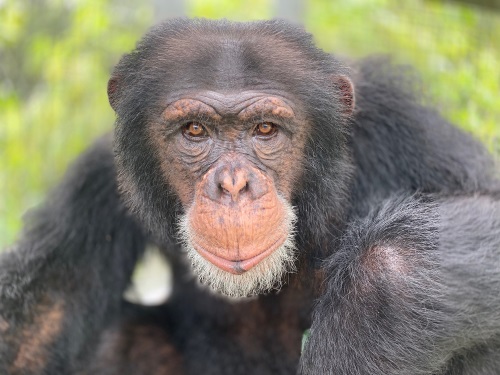Most people are assuming that apes and monkeys are the same because they look somewhat similar and both belong to the primate family. But if you look sharply, they have many key differences in how they move, communicate, and even how their bodies are built. Even when you look at their faces closely, both have slightly different physical features and behaviours that belong to different categories.
Let’s explore what sets them apart.

Source: centerforgreatapes.org
What are the key differences between apes and monkeys?
The key differences between apes and monkeys are given in the table which is given below:
| Feature | Apes | Monkeys |
| Tail | Apes don’t have tails at all. | Many monkeys have long tails, used mainly for balance while climbing. |
| Body Build | Apes have larger and heavier bodies, with wide chests and upright posture. | Monkeys have a smaller body shape and a more compact body with a narrower chest. |
| Skeleton & Limbs | Their shoulders are familiar for swinging from trees (brachiation). | Limbs are suited for running and climbing rather than swinging. |
| Movement | Apes can walk upright for short distances, and they are excellent climbers. | Usually walk on all fours, even when on the ground. |
| Habitat Style | Split time between trees and the ground. | Mostly live in trees; very agile in forest canopies. |
| Brain & Thinking | Apes are generally highly intelligent and good at problem-solving and using tools. | Monkeys are also intelligent but less advanced in terms of thinking and tool use. |
| Communication | Apes use gestures and facial expressions and even learn basic sign language. | Monkeys communicate mainly through vocal sounds and body language. |
| Social Life | Live in complex groups with strong emotional connections. | Also, social but with simpler group structures. |
Where are apes and monkeys mostly found?
Monkeys are mostly found in Africa, Asia, Central America and South America, while apes only live in Africa and Asia.
Five unique primate species spotted in Kampar Peninsula
Researchers have spotted five unique primate species in the Kampar Peninsula of Indonesia—one of which is an ape, and the rest are monkeys.
.jpg)
Source: .inaturalist.org
The only ape which is found in the Kampar Peninsula is the Agile Gibbon. This gibbon swings gracefully through the trees and is known for its dark fur, especially in Kampar. Sadly, it’s endangered due to deforestation and illegal hunting.
Species of monkeys which are found in the Kampar Peninsula:
1. East Sumatran Banded Langur

Source: Irfan Nurarifin/iNaturalist/Creative Commons
2. Long-Tailed Macaque
3. Silvered Langur
4. Pig-Tailed Macaque
These monkeys aren’t just cute — they play a vital role in the forest ecosystem by spreading seeds and acting as prey for larger animals.
Why It Matters?
Observing main differences between apes and monkeys helps us see just how rich and varied life on Earth is. Each primate species has evolved to fit into its environment uniquely. With forests disappearing quickly, knowing more about these animals helps us protect them better.
Comments
All Comments (0)
Join the conversation